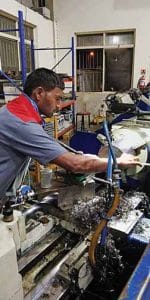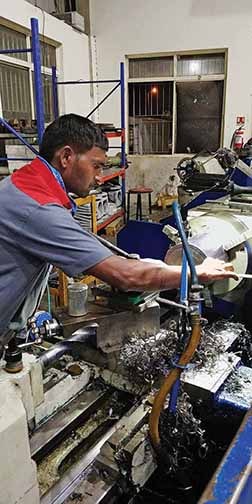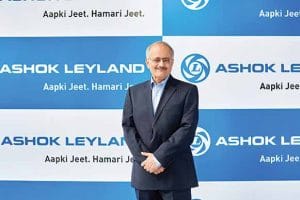In line with the Union Budget 2021-22 announcement, the Government of India approved the PLI scheme for the automobile and auto components industry. Ashish Bhatia visits the fine print to gauge the industry sentiment.
 In the Union Budget 2021-2022, under the Production Linked Incentive (PLI) scheme, Rs.1.97 Lakh crore was allocated for creating “global manufacturing champions” across 13 sectors including industries and services. Back then, the PLI scheme was expected to help the Indian auto industry to improve production efficiency and become self-reliant or ‘AtmaNirbhar’. The allocation of Rs.57,042 crore by the Union Cabinet with the Department of Heavy Industries as the implementing ministry was looked at as a step in the right direction. One that would help the industry generate employment and boost economic growth.
In the Union Budget 2021-2022, under the Production Linked Incentive (PLI) scheme, Rs.1.97 Lakh crore was allocated for creating “global manufacturing champions” across 13 sectors including industries and services. Back then, the PLI scheme was expected to help the Indian auto industry to improve production efficiency and become self-reliant or ‘AtmaNirbhar’. The allocation of Rs.57,042 crore by the Union Cabinet with the Department of Heavy Industries as the implementing ministry was looked at as a step in the right direction. One that would help the industry generate employment and boost economic growth.
The recognition of the manufacturing sector as an integral part of the global supply chain was well received as a boost to the industry. On one hand, it was looked at as a development with the potential of encouraging global manufacturing firms while on the other hand, the scheme was expected to provide incentives for local manufacturing firms to expand. On the whole, the government set out to attract investment in the areas of core competency and cutting-edge technology, ensure efficiencies, create economies of scale, enhance exports and make India an integral part of the global supply chain. Averred Sunjay Kapur, President, ACMA and Chairman at Sona Comstar, “Thrust on incentivising new-age technologies will facilitate the creation of a state-of-the-art automotive value chain in the country and give a much-needed impetus to the manufacturing of cutting edge automotive products in India.”
“Thrust on incentivising new-age technologies will facilitate the creation of a state-of-the-art automotive value chain in the country and give a much-needed impetus to the manufacturing of cutting edge automotive products in India.”
“With a special focus on the localisation of advanced technologies in auto components, India is poised to be an energetic player in the global ecosystem of sustainable mobility.”
“The automotive ecosystem will benefit tremendously as more jobs will be created, component manufacturers can plan their future roadmap better and achieve scale.”
“This will add to the country’s cost-competitive value chain, de-risk the supply chains and go a long way in developing the country as a world-class self-reliant, globally competitive, and future-ready automotive manufacturing base.”
“PLI has the potential to substantially increase volumes and will provide a huge opportunity for exports to grow. This scheme is being announced at an opportune time for India as the auto industry realigns its supply chain globally.”
“The scheme is quite distinct when compared to other sectoral schemes and it addresses existing competitive gaps and aims to foster rapid tectonic technological shifts to leverage opportunities arising from the realignment of global supply chains.”
“This will encourage our outlook towards exports from year on year, especially on the auto components manufacturing side of the business where we expect it to boost production. ”
The fine print
The Rs.57,042 crore outlay of the PLI Scheme for the auto and auto components industry is exclusive of the outlay of Rs.18,100 crore for the Advanced Chemistry Cell (ACC) Battery. It is also exclusive of the Rs.5000 crore outlay for electronics and technology products. Additionally, the PLI Scheme for White Goods (air conditioners and LED lights) to be implemented over FY2021-22 to FY 2028-29 has an outlay of Rs.6238 crore. The recent approval though has a budgetary outlay of Rs.26,058 crore for the automobile industry together with the drone industry. The cut is known to be on the basis of a renewed focus to incentivise high-value Advanced Automotive Technology (AAT) vehicles and products. Despite the cut, the scheme is expected to herald a new age in higher technology, more efficient and green automotive manufacturing. Harsha Kadam, Managing Director and CEO, Schaeffler India Ltd. said, “The Government of India has taken a holistic approach to promote the development of advanced mobility technologies locally and future-proof India’s capabilities and self-sufficiency. With a special focus on the localisation of advanced technologies in auto components, India is poised to be an energetic player in the global ecosystem of sustainable mobility.” “The PLI scheme will enable a smooth, yet accelerated transition to sustainable and environmentally friendly mobility solutions, bringing overall progress to business and society,” he stated. With the announcement of PLI schemes for 13 sectors, a minimum additional production in India is expected to be around Rs.37.5 lakh crore over a five year period. It is expected to generate a minimum expected additional employment of one crore over the same period. Opined Shailesh Chandra, President, Passenger Vehicle Business Unit, Tata Motors,” The automotive ecosystem will benefit tremendously as more jobs will be created, component manufacturers can plan their future roadmap better and achieve scale.”
The new PLI outlay for the automobile and auto components sector will look to overcome the cost disabilities to the industry for the manufacture of AAT products in India. It is expected to draw in fresh investments for an indigenous global supply chain of AAT products. For the automobile and auto components industry, this could translate to a fresh investment of over Rs.42,500 crore, with an incremental production of over Rs.2.3 lakh crore. It holds an employment generation potential of over 7.5 lakh jobs. On the whole, it is expected to increase India’s share in the global automotive trade. Notably, the scheme applies to existing automotive companies as well as new investors yet to join the automobile or auto component manufacturing business. The Component Champion Incentive scheme as a ‘sales value linked’ scheme is known to be applicable on AAT components of vehicles, Completely Knocked Down (CKD)/ Semi Knocked Down (SKD) kits, vehicle aggregates of two-wheelers, three-wheelers, passenger vehicles, commercial vehicles and tractors etc. Chandrajit Banerjee, Director General at CII stated, “This will add to the country’s cost-competitive value chain, de-risk the supply chains and go a long way in developing the country as a world-class self-reliant, globally competitive, and future-ready automotive manufacturing base.”
Besides the Component Champion Incentive Scheme, there is a Champion OEM Incentive Scheme too. Also, a ‘sales value linked’ scheme, the Champion OEM Incentive Scheme is known to be applicable on Battery Electric Vehicles (BEVs) and Hydrogen Fuel Cell Vehicles (HFCV) of the overall pie. Vipin Sondhi, Chief Executive Officer and Managing Director, Ashok Leyland and Vice President, SIAM, said, “PLI has the potential to substantially increase volumes and will provide a huge opportunity for exports to grow. This scheme is being announced at an opportune time for India as the auto industry realigns its supply chain globally.” Vikram Kirloskar, Vice Chairman, Toyota Kirloskar Motor mentioned, “The scheme is quite distinct when compared to other sectoral schemes and it addresses existing competitive gaps and aims to foster rapid tectonic technological shifts to leverage opportunities arising from the realignment of global supply chains.”
With the automotive industry looking to actively open up non-automotive revenue streams, as a means of expansion, the PLI Scheme for the Drones and Drone components industry is aimed at addressing such strategic, tactical and operational uses too. The PLI for the Drones and Drone components industry spans a period of three years and is expected to draw in investments worth Rs.5,000 crore, increase in eligible sales of Rs.1500 crore and create additional employment of about 10,000 jobs. Tanuj Mittal, Director Sales, Customer Process Experience – India at Dassault Systèmes, opined, “This will encourage our outlook towards exports from year on year, especially on the auto components manufacturing side of the business where we expect it to boost production. ACI
Also read, https://autocomponentsindia.com/a-jab-for-localisation/


















Leave a Reply